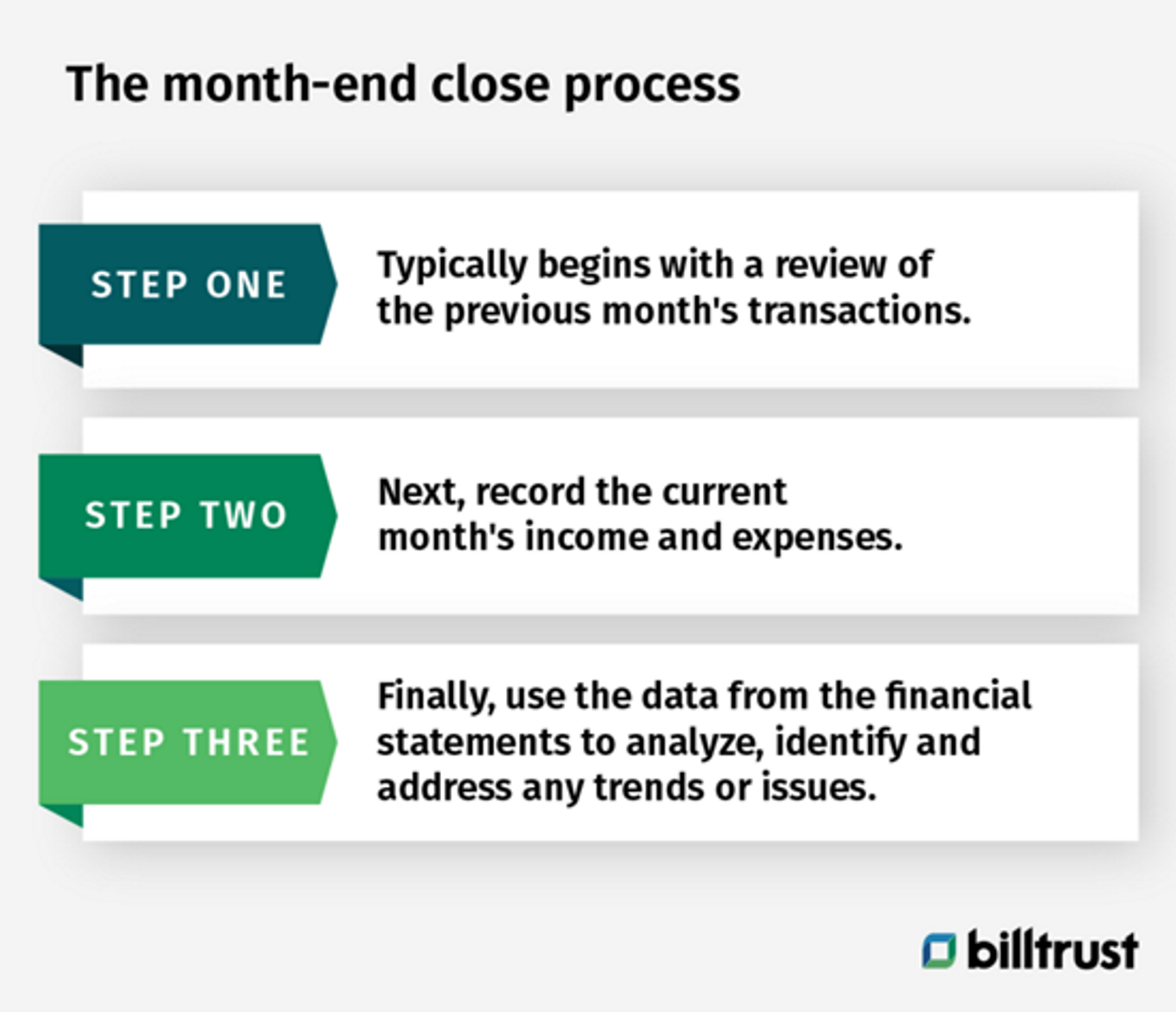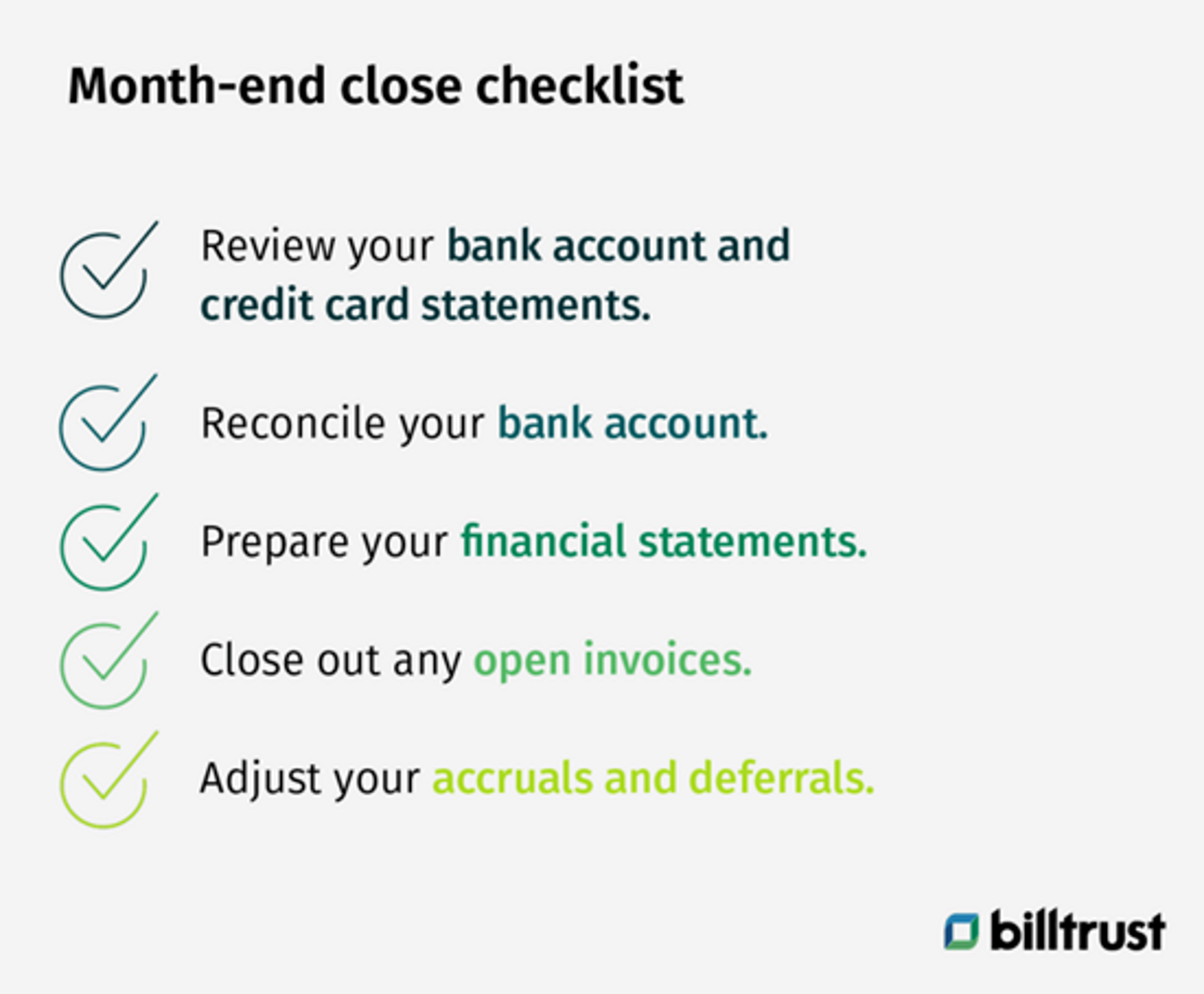Have you ever wondered why it takes your company so long to close your monthly books?
You're not alone.
The month-end close process can be arduous, and it's often one of the most time-consuming tasks in accounting.
In this post, we'll break down the month-end close process and explain why it's such an essential ritual for businesses and how you can help make the process go more smoothly.
Financial accounting and the month-end close process
The month-end close process is an essential part of financial accounting.
You must reconcile their accounts and prepare financial statements at the end of each month. This process can be complex and time-consuming, but it is essential for accurate financial reporting:
- transactions. You reconcile and resolve accounts receivable and payable discrepancies.
- Next, record the current month's income and expenses. This data is used to generate financial statements, including the balance sheet, income statement and cash flow statement.
- Finally, use the data from the financial statements to analyze, identify and address any trends or issues.
Once the month-end close process is complete, you can provide accurate and up-to-date financial information to your shareholders and credit managers.

Why is it necessary?
A company is like a machine with many moving parts. And, like any machine, it needs to be shut down properly at the end of the day. The closing process is essential to ensuring that all the pieces are in their proper place and that the machine will be ready to run the following day smoothly.
The accounts receivable closing process involves preparing a list of all outstanding invoices and calculating the total amount of money owed to the company. Once you compile the information, the accounts receivable clerk will contact each customer with an outstanding balance and request payment. If you do not receive payment, you may turn over the account to a collection agency within a specified time frame.
In short, during the closing, you’ll complete all open orders, process invoices, update inventory levels and balance the books. While this may seem like a lot of work, it's necessary to prevent disruptions during business hours and ensure that the company's financial statements are accurate and up-to-date.
While the closing process may be time-consuming, it's essential for keeping your business running smoothly. So, set aside enough time each day to complete the necessary tasks.
What is a month-end close checklist?
Every business owner knows that the end of the month can be a busy time. Sales are tallied, invoicing to complete to send out, and reports to run. During all this activity, it's easy to forget something important. That's where a month-end close checklist comes in. This handy tool ensures you complete all the necessary tasks before the end of the month.
From reviewing financial statements to reconciling inventory levels, a month-end close checklist helps you keep track of everything you must accomplish. And best of all, it can help prevent those dreaded last-minute scrambling sessions that often lead to mistakes.
To help you avoid that last-minute panic, here's a checklist of everything you should do at the end of every month:
- Review your bank account and credit card statements. Make sure you can account for all transactions and that there are no discrepancies.
- Reconcile your bank account. This will ensure that your books match up with what your bank says you have in your account.
- Prepare your financial statements. This includes your income statement, balance sheet and cash flow statement.
- Close out any open invoices. If you have invoices that have not been paid or are still outstanding, now is the time to close them out.
- Adjust your accruals and deferrals. This ensures that your financial statements are accurate and up-to-date.
Following this monthly checklist will help keep your accounting organized and streamlined, making the month-end a breeze.

How long should it take you to close out your books?
The month-end closing process is a time-consuming time for any business. At the end of each month, you must reconcile your accounts, prepare financial statements and close out your books. The whole process can be pretty daunting, and it's often tempting to just put it off until the last minute. However, rushing through the month-end closing process can lead to mistakes and oversights.
So how long should you realistically allow for the month-end closing process?
Ideally, you should give yourself at least two weeks to complete all required tasks. This may seem like a lot of time, but it's important to remember that the month-end closing process is crucial to running a business.
Think of it this way: Would you rather spend a few hours at the end of each day shutting down your company correctly or deal with the consequences of not doing so? The choice is clear. Skipping steps or cutting corners can have severe consequences down the road. By allowing yourself enough time to complete the process thoroughly, you can help ensure that your business stays on track.
How can you optimize month-end closing with AR automation?
The month-end closing process is a crucial but often admin-heavy and time-consuming part of accounting. Many businesses are turning to accounts receivable (AR) automation to alleviate manual tasks performed by their AR teams.
Accounts receivable automation refers to using software to manage customer invoices and payments. The software can handle tasks such as sending reminders, issuing credits, and issuing refunds. Good AR automation can help to streamline the process and improve accuracy.
Automating accounts receivable tasks can help you:
- Free up time for other important work: Automating time-consuming and repetitive tasks can free your staff to focus on other priorities.
- Reduce errors and improve efficiency: Automating data entry can help to reduce mistakes and save time.
- Make it easier to track payments: Automating the accounts receivable process can make it easier to track payments and aged receivables.
- Improve customer relationships: Automating reminders and follow-ups can help you stay on top of customer communications and improve your relationships.
- Get paid faster: Automating accounts receivable can help you get paid faster by automating tasks such as issuing reminders and follow-ups.
As a result, businesses that invest in good accounts receivable automation software can significantly improve their month-end closing process. With careful planning, month-end closing can be a smooth and positive experience for all involved.
Communicate your accounts receivable AR processes
The month-end close process is a crucial part of running any business. Although it can be time-consuming and stressful, there are a few things that you can do to make the process run more smoothly.
By clear communication, setting aside enough time, and celebrating successes, you can help to make the month-end close process a positive experience for everyone involved.

